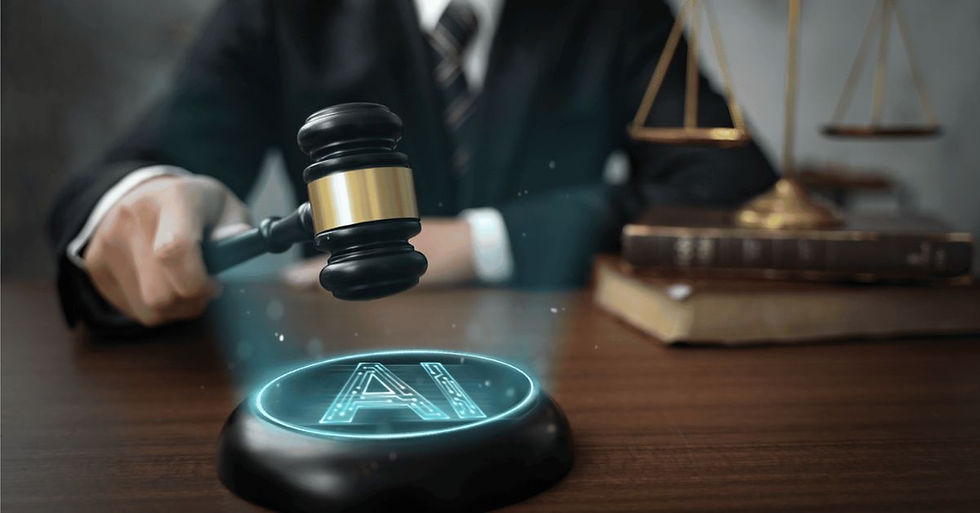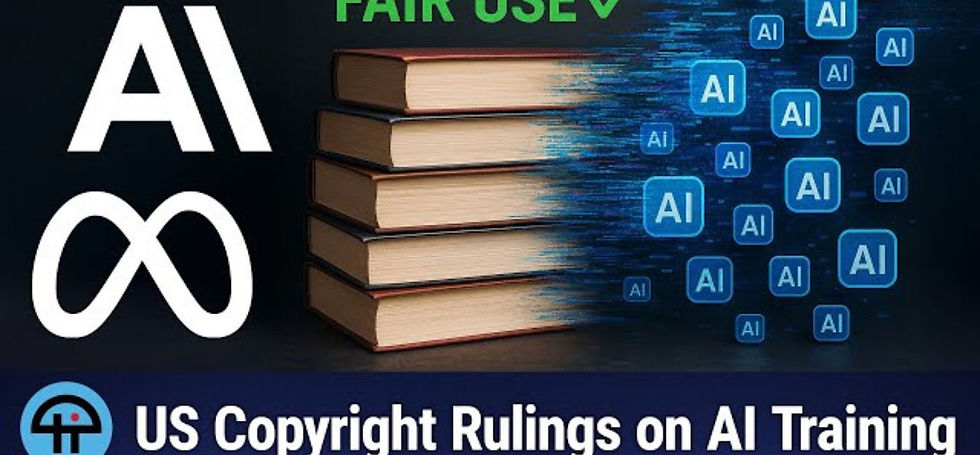U.S. Court Issues Landmark Ruling on AI Training and Copyright
- Gaurav Khandelwal
- Aug 18
- 2 min read
Updated: Oct 31

AI Training and Copyright
AI Training and Copyright have become hotly debated issues as technology continues to reshape intellectual property law. A recent U.S. court ruling has sent shockwaves through both the tech and legal industries, clarifying how artificial intelligence can utilize creative works during its training process. This groundbreaking decision not only influences developers and creators but also sets the stage for how future disputes may unfold.
The ruling emerged after questions surfaced regarding whether copyrighted material could legally be used to train machine learning models. Courts now face the delicate balance between protecting original content and enabling technological progress. This decision recognized the complexity of innovation while upholding the fundamental rights of creators. As industries worldwide watch closely, the precedent emphasizes that intellectual property frameworks must evolve alongside advancing technology.
Businesses relying on AI tools must now rethink compliance strategies. Organizations that previously assumed fair use may cover training datasets need to reassess their legal exposure. Proactive adaptation, risk assessment, and transparent policies become critical for reducing potential liability. Companies can explore insights into how artificial intelligence is already transforming intellectual property strategy in resources like this analysis on IP strategy.
Creative professionals, publishers, and researchers stand to benefit as the judgment signals stronger recognition of ownership rights. Content producers may feel empowered knowing that their material cannot be indiscriminately absorbed into commercial AI systems without consent. At the same time, developers face increased responsibility to source data responsibly and to innovate while respecting legal boundaries.
Public conversation around this issue reflects broader societal concerns. Enthusiasts share visual interpretations, critiques, and commentary across multiple platforms, including vibrant communities on Pinterest, where debates often capture the intersection of art, law, and emerging technologies. These cultural exchanges highlight that the conversation extends well beyond courtrooms, touching creators, technologists, and everyday users.
The ruling also raises practical questions for global collaboration. Since AI models train on massive datasets from diverse jurisdictions, conflicting legal standards may complicate international compliance. Multinational companies must evaluate regional rules carefully to ensure operations remain lawful across markets. By anticipating these challenges, leaders can align innovation strategies with evolving legal frameworks.
Moving forward, businesses should engage experienced advisors to navigate this shifting landscape. Skilled intellectual property professionals can provide guidance, assess datasets, and draft policies that mitigate risk. Organizations interested in proactive strategies or legal consultation can reach out directly through dedicated contact channels to ensure readiness for the future.
Final Thoughts

This court ruling demonstrates that technology and creativity must coexist under robust legal safeguards. The outcome underscores a fundamental principle: innovation cannot thrive in the absence of respect for intellectual property. By blending compliance with forward-thinking strategies, companies and creators alike can participate in a fair, transparent, and sustainable digital ecosystem. The decision is not just a legal milestone—it is a cultural signal that the relationship between artificial intelligence and intellectual property will continue to define the next era of innovation.
.png)










Comments